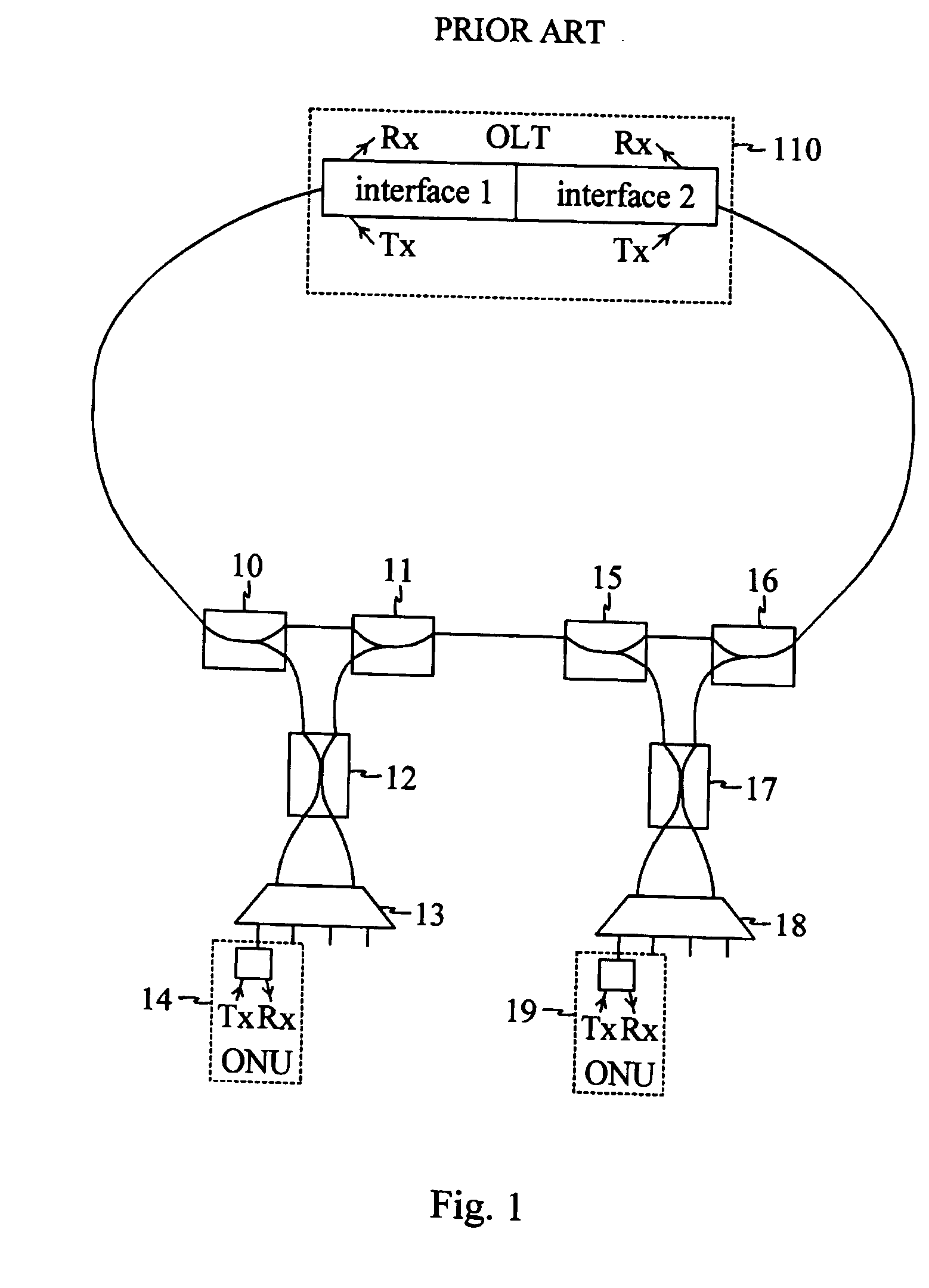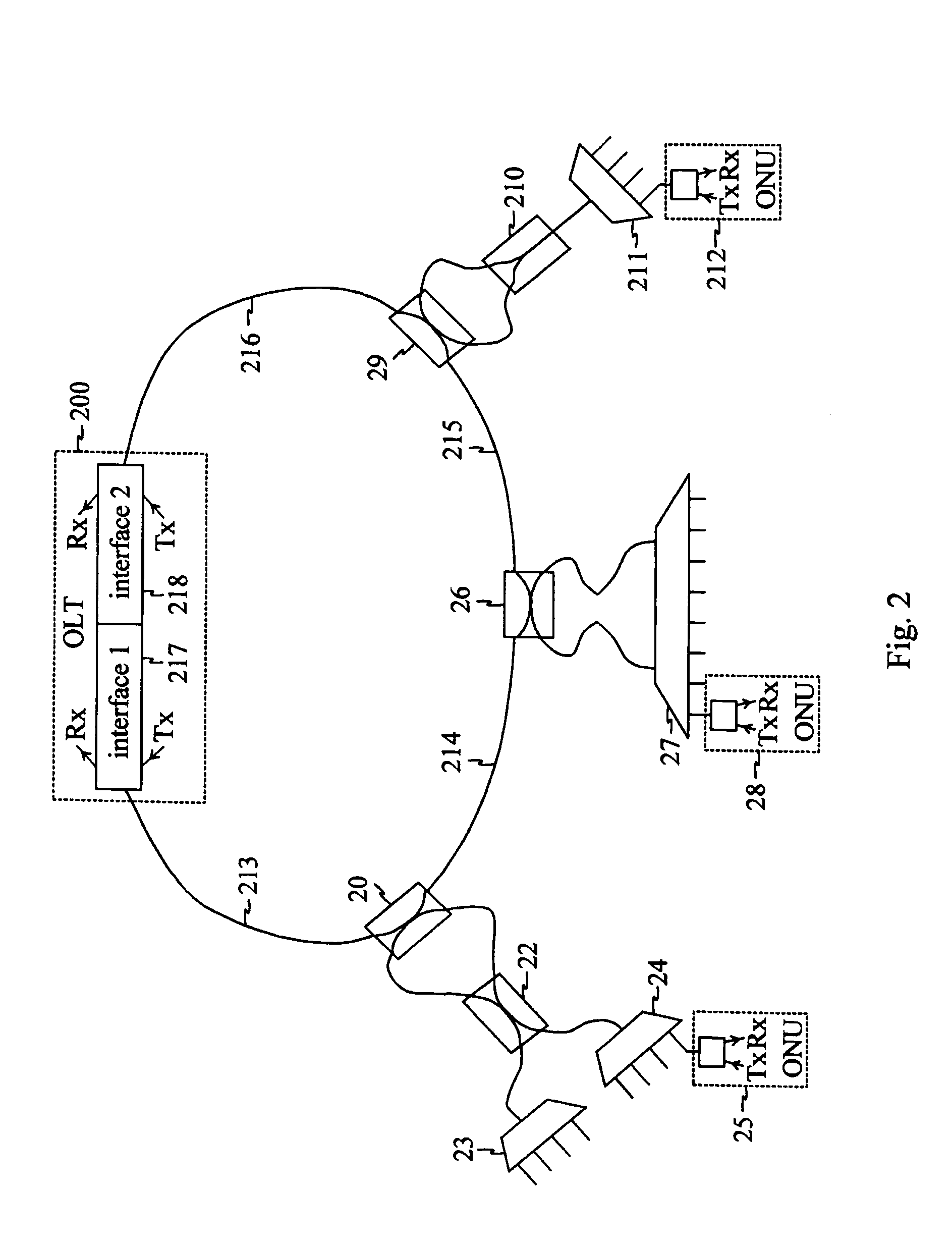Single-fiber protection in telecommunications networks
a technology of single fiber and telecommunications network, applied in multiplex communication, transmission monitoring, instruments, etc., can solve the problems of inability to support extra traffic, inconvenient operation, and inability to support traffi
- Summary
- Abstract
- Description
- Claims
- Application Information
AI Technical Summary
Benefits of technology
Problems solved by technology
Method used
Image
Examples
Embodiment Construction
[0094]FIG. 2 describes a ring-protected PON arrangement configured to serve a number of subscribers. This arrangement includes an OLT 200 having two interfaces 217 and 218, each having a transceiver. Interface 217 is an active interface whereas interface 218 is a standby interface. The distribution network in this example includes three 2-by-2 ring splitters / combiners 20, 26, 29 connected by fiber distribution lines 213-216 to form a ring between the two interfaces 217 and 218. Each ring splitter / combiner 20, 26, 29 is linked to a number of subscriber ONUs 25, 28, 212 via intermediate splitters / combiners 22, 23, 24, 27, 210, 211. The transmitters of OLT 200 are configured to transmit optical signals on a first wavelength (for example 1490 nm). Correspondingly, the receiver of OLT 200 is configured to receive optical signals on a second wavelength (for example 1310 nm). In order to avoid interference, the transmitter of ONUs 25, 28, 212 are configured to transmit optical signals on t...
PUM
 Login to View More
Login to View More Abstract
Description
Claims
Application Information
 Login to View More
Login to View More - R&D
- Intellectual Property
- Life Sciences
- Materials
- Tech Scout
- Unparalleled Data Quality
- Higher Quality Content
- 60% Fewer Hallucinations
Browse by: Latest US Patents, China's latest patents, Technical Efficacy Thesaurus, Application Domain, Technology Topic, Popular Technical Reports.
© 2025 PatSnap. All rights reserved.Legal|Privacy policy|Modern Slavery Act Transparency Statement|Sitemap|About US| Contact US: help@patsnap.com



